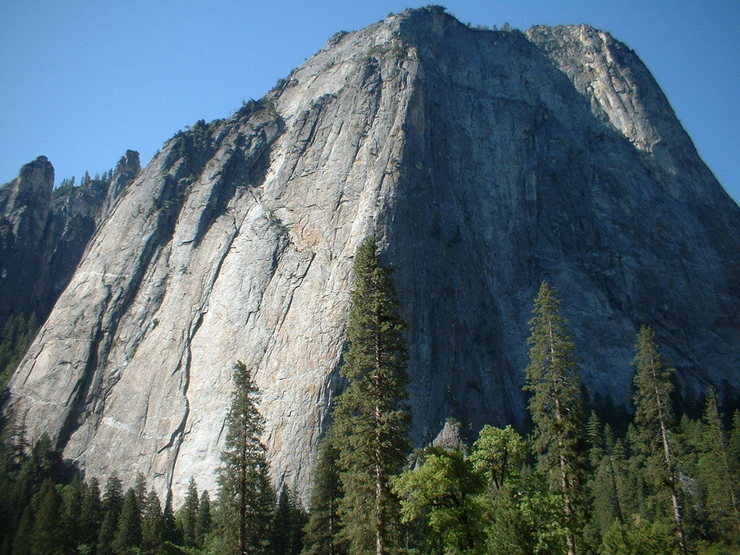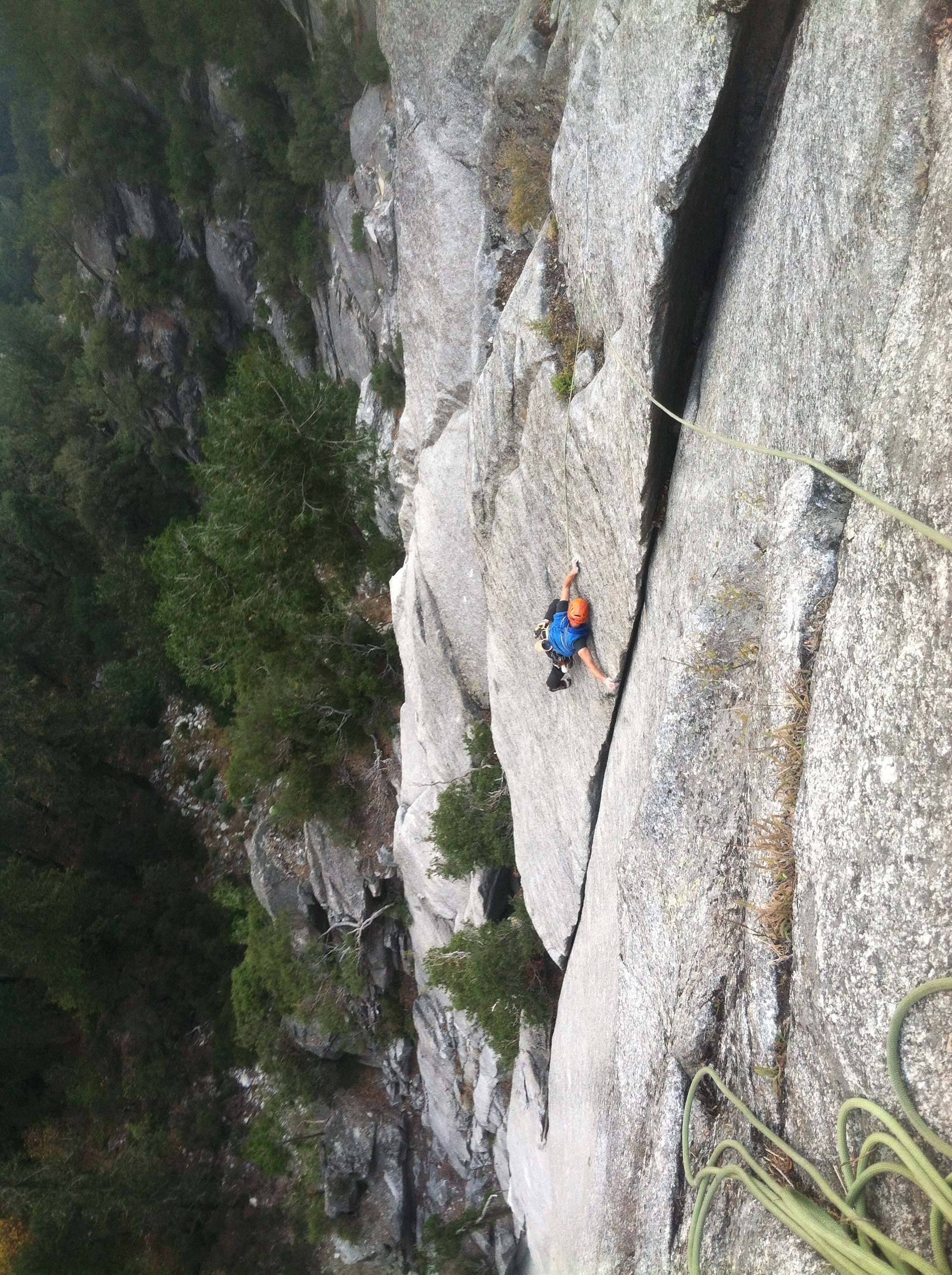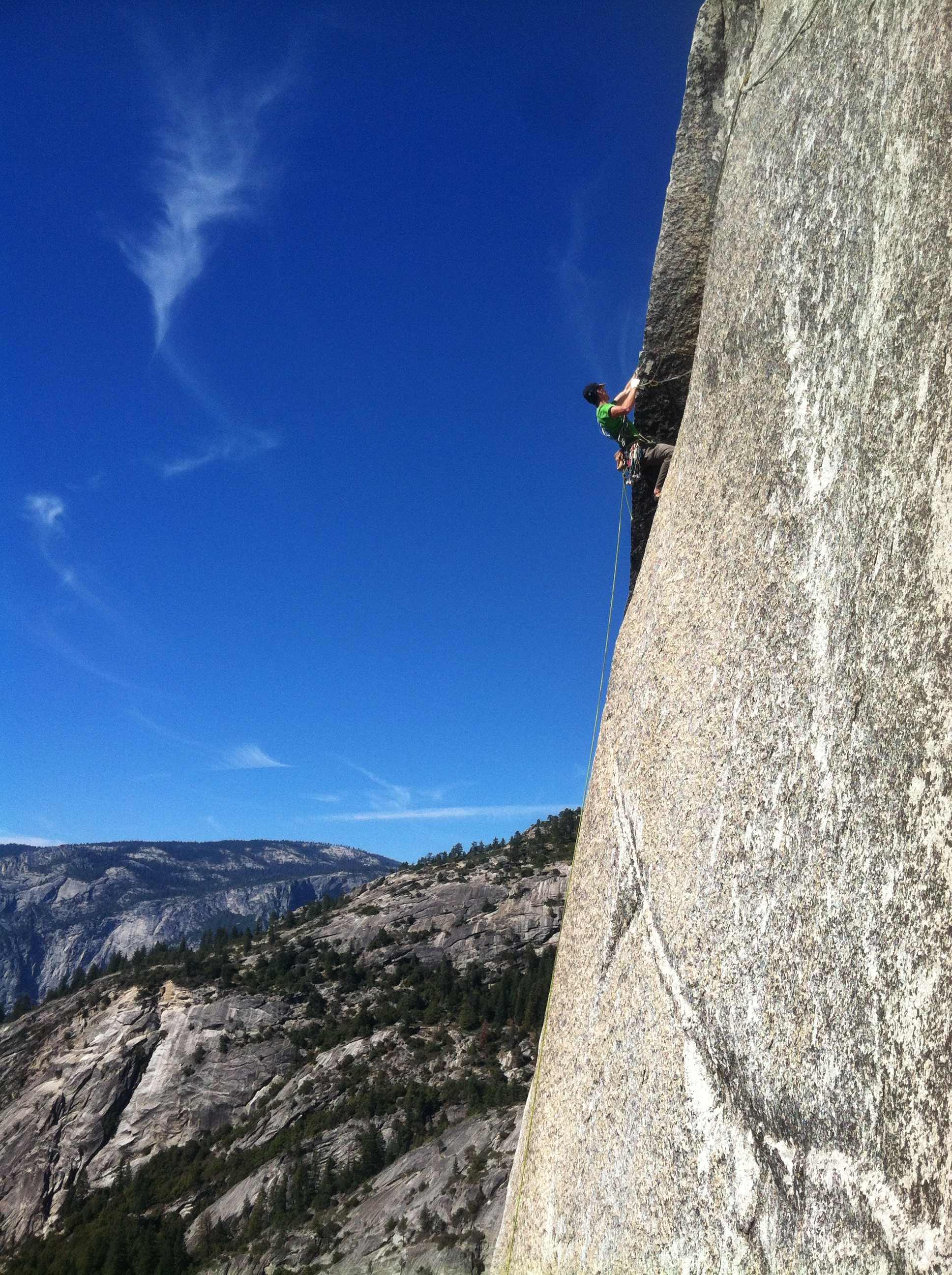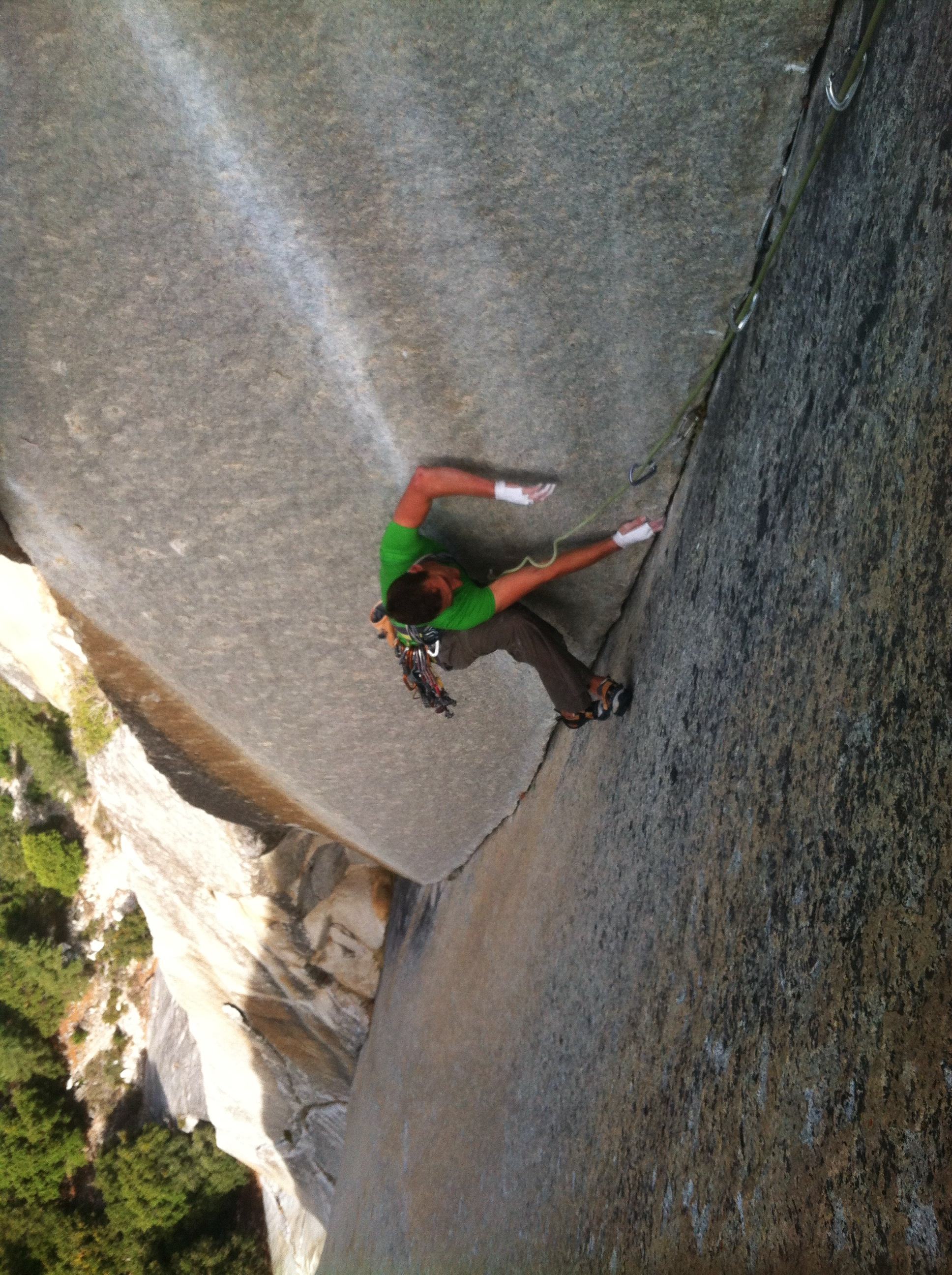Adventure comes in hundreds of ways in Yosemite. Most of the time, the fun starts when something essential is forgotten. Leaving the head lamp, the water, or the topo can all lead to more adventure than planned. This fall taught me the importance of bringing and following the directions on a route.

Stoner’s Highway climbs the left, sunny side of Middle Cathedral.
Stoner’s Highway follows discontinuous features on the immaculate rock of Middle Cathedral. Though the route sits only a few hundred feet from the splitter cracks of Central Pillar of Frenzy, the two routes could not differ more. Where Central Pillar involves well protected jamming, Stoner’s Highway follows technical slab climbing between highly spaced bolts and sparse gear. I snapped a picture of the topo with my iPhone and quested up the slab. I followed a few bolts, saw a feature, climbed back to some bolts and built an anchor forty meters from the ground. When I pulled my phone out to check the topo, I saw a dead battery. That’s when the adventure began.
Bronson and I knew that the route wasn’t harder than 5.10 plus so I quested, looking for any signs of life. I spotted an old piton and followed a dirty corner and bad rock. At the end of the corner, a new bolt marked the route 40 feet to my left. I slung a piece of rock and gently lowered down and then reclimbed the route to the correct path. After a few more harrowing pitches, we rappelled after four pitches.

I read the topo for The Lurch and though it showed a crack system up higher, it said to traverse onto the face. I followed the topo and soon realized why they avoided the cracks. The corner was formed by a pair of instable stacked blocks. I’m glad I read the topo and didn’t blindly follow the corner.
A few days later, British climbing ace, Dan Mcmanus and I hiked towards Widow’s Tears. A pair of local climbers established The Lurch ,a 5.12c/d seven pitch route, earlier this spring. I took a picture of the topo and locked my screen to save battery. We managed to make our way up the route with few problems. I fell on the first 5.12 pitch and did some tactful skirting around loose rock on the fourth pitch. On the crux pitch, we took the name of the route to be literal and did a wild Lurch move across the wall. Dan began descending but instead of following the anchors for the previous pitch, he attempted to link the rappels. He had to build an anchor in the middle of the wall. I rappelled the traversing last pitch, prussiked back to the anchor, pulled the directional and descended again. I pulled the rope and picked up Dan. We continued our descent with less problems.
Doing the crux sequence on the Lurch, which involves a wild move to the arete.
A few days later, Dan and I woke in the dark and hiked to Liberty Cap to climb Mahtah, a new 14 pitch 5.12+ route. We treaded carefully across the ledge to the start. A climber had died falling off the ledge the previous spring. We started the route at sunrise and dispatched the difficult right facing corners. This time, I took a picture of the topo with my phone and we followed it exactly. We found the grades to be a bit generous, which was nice since we’d hiked so far. The route took us all day to climb and the hike down took awhile as well but of my Valley adventures, though it was the biggest day, it was the least epic.

The Crack of God pitch on Mahtah is a 130 foot dead horizontal traverse which links the corners of Mahtah with the Harding route.

Dan Mcmanus following one of the 5.12 corner pitches on Mahtah.
One of the big lessons I learned this fall in Yosemite was to follow the topo. It makes route’s significantly easier, far less dangerous, and allows you to have bigger adventures.

